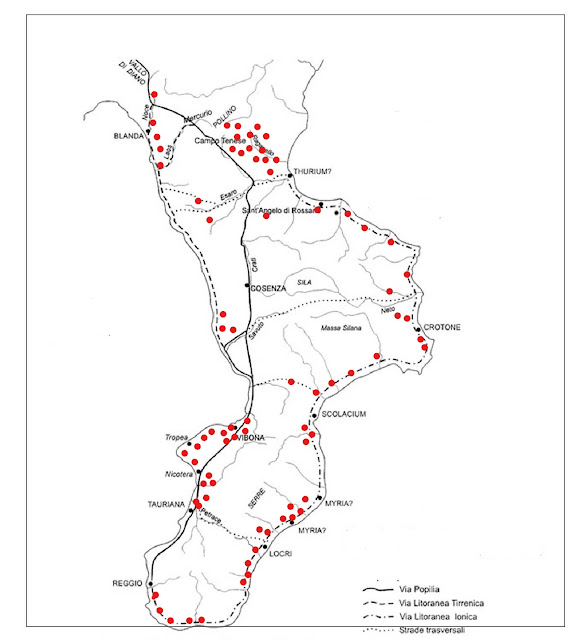MEDIEVAL TOWN OF SQUILLACE
Dear readers, I'll tell you the story of the important medieval town of Squillace the heir of the ancient Skilletyon/Scolacium.
position
ORIGINS - the city founded by greek colonists (Achei) with name of Skylletion in VI century b.C., some scholars argue that it founded by powerful Polis of Crotone as a control autpost on the Gulf of Squillace and its internal territory.
In a short time it became a thriving center.
In II century b.C. it was conquered by Romans, who given it the name of Minerva Scolacium, the new city was built on the greek one, immersed in a fertile plain with them the city became economically rich and in Imperial age (I century b.C.) it had an important monumentalization (foro, theater, paved streets....).
In the Roman age, Scolacium was an important city of Bruzio (Calabria) so-called city-territory.
the ancient Skylletion/Scolacium was collocated on coast
the norman fortress (1070) dominates the city
stretch of the magnificient Gulf of Squillace
FORO
NOTE - Scolacium is the only roman city with the Foro paved in clay bricks
roman paved street
(foto by romanoimpero.com)
Scolacium had an important theater (4500 seats) - I century a.C.:
In IV-V century a.C. on the heights of stairs of summa cavea the inhabitants founded the late ancient city for to avoid the attaks of Barbarian (Vandali).
museum of Scolacium
Hight middle age: Scolacium in the IV century a.C. it became an important bishop's see, between IX and X century a.C. was destroyed by Saracens and its inhabitants moved to the hills behind the coastand founding today's Squillace.
Squillace is immersed in a fertile landscape and bursting nature, with a view that reaches the coast😃.
In the XI century the Normans built a great castle and other buildigs, such as the cathedral.
With Emperor Frederick II of Swabia, the castrum of Squillace will remain among so-called "castelli regi" (castel of the court).
in the historic center is a small gothic church (XIII century), would seem to be traceable to templar architecture
Dott. Giuseppe Lombardo




















Commenti
Posta un commento